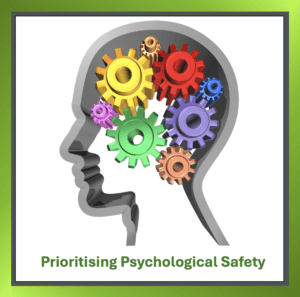Prioritising Psychological Safety
In the quest to combat workplace stress, psychological safety must be prioritised as a strategic imperative. According to David Bowes from Insights, addressing this often-overlooked root cause can significantly mitigate stress levels beyond mere wellbeing initiatives.
While Stress Awareness Month concluded in April, the reality for many employees is that stress persists throughout the year. With a quarter of UK employees struggling to cope, stress remains a pervasive issue that demands ongoing attention.
Research highlighted in the Harvard Business Review underscores a critical insight for HR professionals: without a safe environment for employees to voice concerns, push back, or express when overwhelmed, stress levels soar, leading to disengagement, burnout, and attrition. Silent teams are underperforming teams, and stressed workforces are vulnerable workforces.
Psychological safety forms the cornerstone of high-functioning, resilient teams and organisations. This was clearly demonstrated by Google’s Project Aristotle, which identified psychological safety as the most crucial factor in effective teams. Yet, many workplaces still fall short, with only 29% of workers feeling psychologically safe.
Four Practical Strategies for Leaders
To transition from theory to action, HR leaders can implement these four evidence-based strategies to embed psychological safety into their organisational culture:
- Invest in Awareness Training
Building self-awareness is essential for effective communication and robust team dynamics, paving the way for psychological safety. Employees who understand themselves and others are better equipped to manage responses, navigate relationships, and reduce friction. Tools like behavioural frameworks or psychometric assessments can facilitate this awareness.
- Promote Thoughtful Communication
Psychological safety isn’t about unfiltered honesty at the expense of others but about respectful authenticity. Roleplay workshops can teach employees the emotional impact of their words and how to communicate with empathy. Facilitators can create immersive training that mirrors real-world scenarios, helping individuals deliver feedback that supports trust. Additionally, virtual reality and AI-based roleplay tools can simulate challenging workplace situations, preparing employees for real-life scenarios.
- Encourage Tough Conversations
Fear often prevents employees from initiating difficult conversations. HR teams can develop a ‘tough conversations playbook’ featuring phrasing guides, conflict resolution tips, and case studies. Leadership development programs should also equip managers to facilitate constructive dialogue and address tensions proactively. Tools like Star Manager focus on building operational coaching to encourage early, productive conversations.
- Encourage Frequent, Informal, and Constructive Feedback
Feedback should be an integral part of daily work, not reserved for annual reviews. Managers require clear guidance on delivering feedback that is specific, timely, and non-threatening. Models like the *D4 feedback model or the situation-behaviour-impact *SBI model can create shared understanding and focus on future improvement.
For HR leaders, the call to action is clear: psychological safety must be treated as a strategic imperative to address stress, integrated year-round into leadership behaviours, team rituals, manager training, and organisational systems.
*The D4 and SBI models are frameworks used for delivering effective feedback in the workplace by facilitating clear and constructive communication.
D4 Feedback Model:
Data: Focuses on establishing the facts of a situation without any judgment, ensuring that the feedback is grounded in observable and objective details.
Depth of Feeling: Explores the emotional impact of the situation on the individuals involved, supporting empathy and understanding.
Dramatic Interpretation: Considers the meanings and interpretations that people attach to the situation, encouraging reflection on how perceptions might vary.
Do: Discusses what actions were taken or could be taken in response to the situation, and what results those actions achieved or might achieve.
SBI Feedback Model:
Situation: Describes the context or specific situation in which the observed behaviour occurred, helping set the stage for understanding the feedback.
Behaviour: Focuses on the specific actions or behaviours that were observed, making the feedback clear and specific.
Impact: Explains the effects or outcomes of the behaviour on others or the workplace, highlighting why the behaviour is important and providing motivation for change or continuation.
Both models aim to enhance the effectiveness of feedback by focusing on clear communication, understanding emotional impacts, and encouraging constructive actions.

